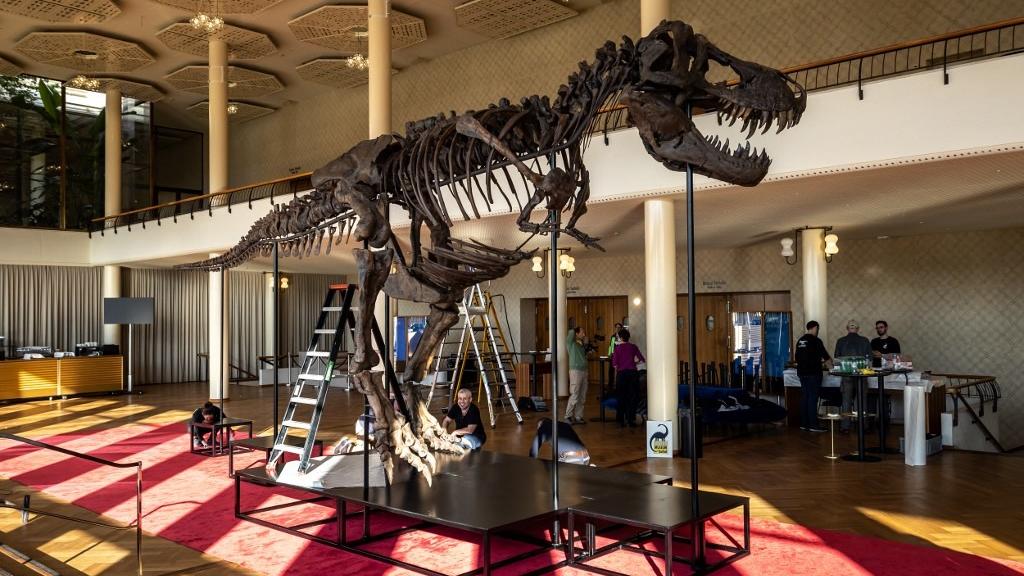Science & Environment
Scientists Propose New Tyrannosaurus Species Discovered in New Mexico Fossil

Highlights
- Scientists propose a new Tyrannosaurus species, challenging the belief in a single T. rex species.
- A skull found in New Mexico in 1983 is reclassified as Tyrannosaurus mcraeensis.
- Subtle differences, like a shallower jaw, set it apart from T. rex.
- Some skepticism exists about the observed differences and fossil dating accuracy.
- Only 25% of the skull has been found, with key parts still missing.
- Scientists stress consistent features supporting the distinct species.
- Discovery suggests giant Tyrannosaurus species evolved earlier from southern North America.
- Ongoing scientific debates surround the existence of additional Tyrannosaurus species.
- The finding opens new paths for exploring Tyrannosaurus diversity and evolution.
In a groundbreaking discovery, scientists reevaluating a partial skull unearthed in 1983 in southeastern New Mexico have suggested that it represents a new species of Tyrannosaurus. This finding challenges the long-standing notion that Tyrannosaurus rex was the sole species of its genus.
The fossil, originally identified as a T. rex skull, has been reclassified as belonging to a distinct species named Tyrannosaurus mcraeensis. According to the researchers, subtle differences observed in the skull, such as a shallower and more curved lower jaw and lower hornlets above the eyes, warrant recognizing it as a separate species.
However, skepticism surrounds this conclusion, as some researchers argue that the observed differences are unremarkable and question the accuracy of dating the fossil to 71-73 million years ago. T. rex fossils are traditionally dated to the period just before the asteroid impact that led to the extinction of dinosaurs around 66 million years ago.
Paleontologist Anthony Fiorillo, an author of the study published in Scientific Reports, explained that about 25% of the skull has been collected, with significant portions, including the braincase and upper jaws, still missing. Fiorillo emphasized the consistency of the observed differences, suggesting a distinct species.
One of the researchers, Nick Longrich from the University of Bath, highlighted that these differences in the New Mexico specimen imply variations in diet and potential differences in mate selection compared to the more famous T. rex. Fiorillo added that specific traits, like the feature above the eyes, may have played a role in sexual selection.
The existence of T. mcraeensis challenges previous understanding, indicating that giant species of the Tyrannosaurus group evolved millions of years earlier than believed and originated from southern North America. This discovery alters the narrative of Tyrannosaurus origins and its evolutionary timeline.
Despite the significance of this finding, some experts remain unconvinced. Thomas Carr of Carthage College questioned the persuasiveness of the study, stating that the observed differences are subtle and could be attributed to relative maturity and individual variation. Carr also raised concerns about the fossil’s dating methodology.
The debate over potential additional Tyrannosaurus species has been ongoing. In 2022, researchers proposed three Tyrannosaurus species based on variations in thighbones and teeth, but the evidence remains contentious.
This discovery opens up new avenues for understanding the diversity and evolution of Tyrannosaurus species, challenging preconceived notions and prompting further exploration in the field of paleontology.






















































